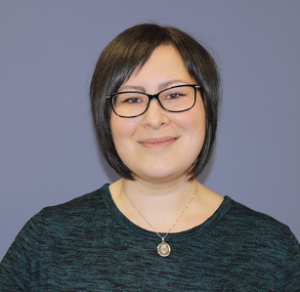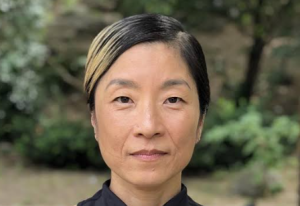
A Conversation with Marissa McKool
Marissa McKool, MPH, knows burnout from the inside out. After more than a decade in public health, including leadership roles at UC Berkeley’s Wallace Center and the CDC, she found herself overwhelmed, exhausted, and doubting whether the career she loved was sustainable. Coaching changed everything. Now, as The Public Health Burnout Coach, she helps women in the field do what she did: reclaim their time, energy, and sense of self, without sacrificing their impact.
Since 2021, Marissa has worked full-time coaching high-achieving women in public health who are tired of running on empty. Drawing on feminist principles and lived experience, she teaches her clients how to recognize chronic stress, set guilt-free boundaries, and exit the burnout cycle for good.
In this interview, she shares what sets burnout apart from stress, how internalized expectations often keep women stuck, and why recovery isn’t just possible: it’s transformative.
Given the current political attacks on public health, reproductive rights, and DEI efforts, how do you differentiate between burnout and the feelings of fear, helplessness, or moral injury that many public health professionals are experiencing right now?
Emotions like fear, anger, anxiety, and other negative emotions are normal responses to the political changes happening around us. As humans, we’re wired to experience the full spectrum of emotions—both positive and negative. Burnout often sets in when we get stuck in those difficult emotions. It happens when fear, anxiety, and overwhelm become constant, and we either don’t know how or aren’t able to shift out of them.
You describe burnout as something that can be eliminated, not just managed. How do you distinguish burnout from the everyday stress that comes with public health work?
In everyday language, we often use the word “stress” to describe how we’re feeling, especially when we’re overwhelmed. But stress isn’t actually an emotion; it’s a physiological response to external stimuli. When we encounter a stressor, our brain can activate the body’s stress response, commonly known as fight, flight, or freeze. This response is a natural and necessary part of being human. It helps keep us alive in situations of real danger.
However, in modern life, we often trigger this same response over things that don’t actually threaten our immediate survival, like reading a difficult email or being rejected for a job. When we’re able to move out of the stress response, stress remains short-term or “acute.” But when we stay stuck in it, day after day, stress becomes chronic. This is when it starts turning into burnout.
Unfortunately, most of us were never taught what the stress response actually is, let alone how to exit it on purpose. The good news is: once you learn how to regulate your stress response, you can begin to recover from burnout and prevent it from happening again.

“Burnout isn’t just about doing too much—it’s about forgetting you matter too.” —
Marissa McKool, MPH
Many people in public health are systems thinkers, but burnout is deeply personal. How do you coach clients to navigate the tension between personal change and structural injustice?
I like to think about the root causes of burnout in two main categories: external causes and internal causes. External causes are systemic policies and cultural norms that contribute to burnout, like the lack of paid parental leave or insufficient staffing to handle the workload. These create external stressors beyond our immediate control.
Internal causes, on the other hand, come from within us, our beliefs, choices, and behaviors that keep us stuck in the stress cycle. For example, people-pleasing tendencies that make it hard to say no or set boundaries, leading to overwork. These are the factors we have direct control over and can change. This is where coaching can make a big difference. While we might not be able to fix all the external, systemic barriers, we can change how we respond and stop making things harder for ourselves.
How does your coaching approach specifically support women in public health leadership, who often face both systemic barriers and personal expectations?
My coaching focuses on undoing the effects of patriarchal conditioning that often contribute to the internal factors driving burnout. We know that structurally, the patriarchy impacts women through things like the gender pay gap and the absence of a national paid maternal leave policy. But what’s less talked about is how women internalize these messages.
When we’re taught, both directly and indirectly, that your role is to make sure everyone else is happy and cared for, it’s easy to start thinking, “I shouldn’t say no; it would burden others.” This leads to difficulty setting boundaries and saying yes to too many demands.
In coaching, we work to release the guilt and shame many women feel about not doing enough or not being good enough. By clearing those feelings, women become confident and empowered to prioritize themselves without hesitation.
Have you noticed a shift in what your clients are bringing to sessions in the last couple of years, especially as public health work has become increasingly politicized?
This might surprise you, but the answer is no. What I’ve found is that during times of crisis or increased external challenges, the same burnout issues are happening, they’re just more intense. For example, some of the women I worked with during COVID were struggling with overworking. It might seem like COVID caused it, but in reality, they were already overworking before the pandemic.
This was due to those internal causes of burnout, they weren’t setting boundaries, saying no, or delegating effectively. Then, when an external crisis like COVID hit, the challenges became greater and more frequent. Because they didn’t have the skills to delegate, say no, or set boundaries, the outcome was simply magnified.
You’re Missing the Headlines That Matter
🚨 Critical science is unfolding—are you in the loop?
Each week, This Week in Public Health delivers need-to-know insights that shape policy, practice, and community health. If you’re not reading it, you’re already behind.👉 Subscribe for free now to stay ahead.
📢 Share this blog—someone you know needs to see it too.



